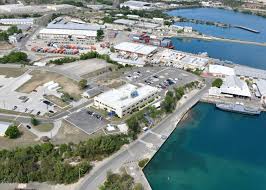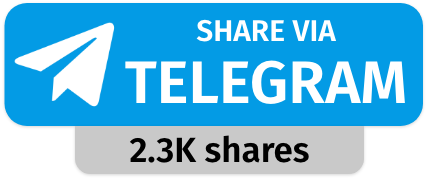Today’s Current Affairs: 1st February 2025 for UPSC IAS exams, State PSC exams, SSC CGL, State SSC, RRB, Railways, Banking Exam & IBPS, etc
Table of Contents
World Leprosy Day:

World Leprosy Day is observed on January 30 every year to make people aware of leprosy and remove the misconceptions spread in society.Leprosy, also known as Hansen’s disease, is a chronic infectious disease caused by a type of bacteria, Mycobacterium leprae.
- The disease predominantly affects the skin and peripheral nerves.
- Left untreated, the disease may cause progressive and permanent disabilities.
- Apart from the physical deformity, persons affected by leprosy also face stigmatization and discrimination.
- It is a neglected tropical disease (NTD) that still occurs in more than 120 countries, with more than 200,000 new cases reported each year.
- It is known to occur at all ages, ranging from early childhood to old age.
- The disease is transmitted through droplets from the nose and mouth of an untreated case of leprosy, containing the causative agent, following prolonged, close contact.
- The disease does not spread through casual contact (like shaking hands or hugging, sharing meals or sitting next to each other).
- The patient stops transmitting the disease upon initiation of treatment.
- It usually takes about 3 to 5 years for symptoms to appear after you come into contact with the bacteria that cause leprosy.
- The main symptom of leprosy is disfiguring skin sores, lumps, or bumps that don’t go away after several weeks or months.
- In some cases, body parts may lose their sense of touch and pain, increasing the likelihood of injuries such as cuts and burns.
- Leprosy is a curable disease.
- The currently recommended treatment regimen consists of three medicines (dapsone, rifampicin and clofazimine) and is referred to as multi-drug therapy (MDT).
Graphics Processing Unit:

As many as six firms will develop Indian foundational Artificial Intelligence (AI) models using newly provisioned Graphics Processing Units (GPUs) by the IndiaAI Mission, Union Minister for Electronics and Information Technology announced recently.
- A GPU is an electronic circuit board that can quickly perform many mathematical calculations.
- Like a Central Processing Unit (CPU), a GPU is also a chip component in computing devices.
- The technology was originally designed to speed up 3-D graphics rendering.
- Since its introduction in the 1990s, the GPU has transformed computer software and video games, allowing programmers to produce vivid and realistic images on screens.
- GPUs have been used beyond computer graphics in areas including high-performance computing, machine learning, Artificial Intelligence (AI), weather forecasting and cryptocurrency mining.
Guantánamo Bay:

The US President signed an executive order directing the preparation of a large-scale migrant detention centre at the US naval base in Guantánamo Bay.
- It forms an inlet of the Caribbean Sea, indenting southeastern Cuba.
- It is a large and well-sheltered bay; it has a narrow entrance to a harbour and is capable of accommodating large vessels.
- It is served by the ports of Caimanera and Boquerón.
- The strategic importance of the bay close to the Windward Passage between Cuba and Haiti that links the Atlantic Ocean to the Caribbean Sea and Panama.
- Guantanamo Bay, widely known as “Gitmo,” has been used to house terrorism suspects since the September 11, 2001, attacks, but it also has a small, separate facility known as the Migrant Operations Centre.
- This centre has historically held migrants intercepted while attempting to enter the US by boat, primarily from Haiti and Cuba.
- The facility occupies only a small part of the base and currently lacks the capacity to house the 30,000 detainees.
Cannabis Cultivation : In News

The Himachal Pradesh Cabinet approved a pilot study by two universities on the controlled cultivation of cannabis for medicinal and industrial purposes.
- It is the regulated cultivation of specific cannabis varieties having minimal intoxicating properties, along with strict monitoring to prevent misuse. Such varieties are commonly known as
- The tetrahydrocannabinol (THC) cannabinoid content (a kind of chemical that has an intoxicating effect) in controlled cannabis should be less than or equal to 3 per cent.
- Under this, authorities focus on its non-narcotic applications, particularly in the pharmaceutical and industrial sectors.
- Hemp’s stalks, leaves, and seeds can also be converted into textile, paper, food, cosmetics, biofuel and more. Additionally, cannabidiol (CBD) compounds in the plant are effective in treating chronic pain.
- Laws related to cannabis cultivation in India
- Cannabis cultivation is largely prohibited in India due to its psychoactive properties.
- Section 2 of the Narcotic Drugs and Psychotropic Substances (NDPS) Act, 1985, prohibits the production and sale of cannabis resin and flowers.
- It defines charas as the separated resin, in any form (crude or purified), obtained from the cannabis plant. It also includes concentrated preparations such as hashish oil or liquid hashish.
- However, it provides exceptions for cannabis cultivation and use for industrial and medicinal purposes under government regulation.
- Section 10 of the Act allows state governments to regulate, permit, or prohibit cannabis cultivation for medicinal and scientific purposes.
Post-Quantum Encryption Cryptography:

Virtual Private Network (VPN) companies are adapting to the potential threats posed by quantum computing through the implementation of Post-Quantum Cryptography (PQC).
- PQC refers to cryptographic methods that do not rely on mathematical problems easily solvable by quantum computers.
- It is also known as quantum-resistant, quantum-safe, or quantum-proof cryptography.
- These methods are designed to remain secure against attacks from both classical and quantum computing systems.
- A VPN technology encrypts data and hides a user’s IP address to ensure secure communication between devices to protect data privacy and security.
- Quantum computing poses several threats to current encryption methods due to its ability to perform extremely fast calculations.
- Quantum computers can solve complex mathematical problems like factoring large numbers and solving discrete logarithms.
- This could compromise encryption methods like Rivest-Shamir-Adleman (RSA) and elliptic curve cryptography (ECC), which are widely used for secure communication.
- Cybercriminals may store encrypted data instantly and decrypt it later when quantum computers become powerful enough, endangering sensitive information.
- Sectors like finance, healthcare, and government communications face risks of data breaches and financial losses if quantum computers break encryption standards.
e-Shram Microsite and Occupational Shortage Index:

The Union Minister for Labour & Employment launched two significant initiatives – State and Union Territory Microsites under the e-Shram initiative and the Occupational Shortage Index (OSI).
- e-Shram Microsite is a transformative initiative aimed at ensuring that unorganised workers have seamless access to both State and Central government welfare programs.
- These microsites are state-specific digital platforms seamlessly integrated with the national e-Shram database.
- It will facilitate two-way integration between State portals and the eShram portals and will facilitate simplified registration of unorganised workers.
- This will provide a one-stop solution for seamless access to both Central and State welfare programs for unorganised workers, employment opportunities, skilling programmes, etc.
- For States/UTs, the microsites provide a ready-to-use digital infrastructure, reducing the need for costly and time-consuming development processes.
- With real-time analytic dashboards, they facilitate better policy decision-making and allow States to include tools specific to their labour market requirements.
- It offers a seamless registration process and access to a wide range of social security benefits.
- The platform ensures multilingual accessibility, enabling workers from different regions to access information and services in their preferred language.
- Through two-way integration with the e-Shram database, workers receive real-time updates on welfare schemes and employment opportunities.
- It will enhance transparency and efficiency in welfare service delivery.
Human African Trypanosomiasis: : WHO Announcement

The World Health Organization (WHO) announced that Guinea has successfully eliminated the gambiense form of Human African Trypanosomiasis (HAT) as a public health problem.
- Human African Trypanosomiasis is a parasitic disease transmitted through the bite of infected tsetse flies.
- It is also known as sleeping sickness and is endemic in sub-Saharan Africa.
- It initially presents with symptoms such as fever, headaches, and joint pain, but can progress to neurological issues like confusion, disrupted sleep, and behavioural changes. If left untreated, the disease can be fatal.
- First signs and symptoms emerge a few weeks or months after infection. The disease develops rapidly with multi-organ invasion, including the brain.
- It takes 2 forms, depending on the subspecies of the infecting parasite:
- Trypanosoma brucei gambiense is found in 24 countries of west and central Africa, currently accounts for 92% of reported cases and causes a chronic illness.
- A person can be infected for months or even years without major signs or symptoms. When evident symptoms emerge, often the disease is advanced with the central nervous system already affected.
- Trypanosoma brucei rhodesiense is found in 13 countries of eastern and southern Africa accounts for 8% of reported cases and causes an acute disease.
- It is more prevalent amongst rural populations which depend on agriculture, fishing, animal husbandry or hunting are the most exposed.
- To date, WHO has validated the elimination of the gambiense form of HAT in seven countries: Togo (2020), Benin (2021), Ivory Coast (2021), Uganda (2022), Equatorial Guinea (2022), Ghana (2023) and Chad (2024).
Economic Community of West African States (ECOWAS) : Country Withdrawal
The West African nations of Niger, Mali, and Burkina Faso have officially withdrawn from the Economic Community of West African States (ECOWAS).The three countries formed the Alliance of Sahel States, seeking military support from Russia and distancing themselves from the US and France.The Sahel is a semiarid region (western and north-central Africa), a transitional zone between the Sahara desert (north) and humid savannas (south).ECOWAS is a regional group of 15 West African countries (before withdrawal), founded in 1975 with the signing of the Treaty of Lagos (Nigeria).It is headquartered in Abuja, Nigeria and aims to promote economic integration and shared development of the West African sub-region.
First Defence Export of Ordnance Clothing:
The Ordnance Clothing Factory (OCF), Avadi, under the Ministry of Defence, executed India’s first defence export order to the Republic of Suriname.OCF is developing a “Future Soldier System” that includes lightweight, digitally printed, antibacterial camouflage uniforms and ballistic helmets (0.9 kg) to enhance soldier mobility.OCF Avadi manufactures bullet-resistant jackets, ballistic helmets, vests, and bomb suppression blankets.India’s defence exports rose to over Rs 21,000 crore in 2023-24, up from Rs 2,000 crore in 2014 with a target of Rs 50,000 crore by 2029.
Stampede : Mahakumbh
A tragic stampede at Mahakumbh Mela 2025 in Prayagraj on January 29 resulted in 30 deaths and 60 injuries, raising concerns over crowd management failures.A stampede occurs when a large group of people move uncontrollably, often leading to trampling, suffocation, and fatalities.It can result from rumors, fear, limited space, or sudden movements, creating chaotic crowd behavior.Studies indicate that 79% of stampedes in India have occurred during religious events.
Devi Ahilyabai Holkar:
Indira Gandhi National Centre for the Arts (IGNCA)in collaboration with Lokmata Ahilyabai Trishatabdi Samaroh Samiti, hosted a special lecture, ‘Devi Ahilya – Empress Renunciate,’ to mark the 300th birth anniversary of Devi Ahilyabai Holkar. Born on May 31, 1725, in Chondi village, Maharashtra.Ruled the Holkar dynasty of Indore within the Maratha Confederacy from 1767 to 1795. Established Maheshwar (Madhya Pradesh) as the capital of the Holkar dynasty.Established a textile industry in Maheshwar, now famous for Maheshwari sarees.Promoted industrialization and trade while maintaining financial stability.
Axiom Mission 4 (Ax-4):
Axiom Mission 4 (Ax-4) has gained significant attention as ISRO astronaut and Indian Air Force (IAF) officer Shubhanshu Shukla is set to become the first Indian astronaut to visit the International Space Station (ISS) aboard a SpaceX Dragon spacecraft.Axiom Mission 4 (Ax-4) is a private spaceflight to the International Space Station (ISS), operated by Axiom Space, a US-based space infrastructure company.It is the fourth mission in collaboration with NASA, following Axiom Missions 1, 2, and 3.Ax-4 aims to advance commercial activities in Low Earth Orbit (LEO), including space tourism and the development of commercial space stations.The mission will use a SpaceX Dragon spacecraft, launched by a Falcon 9 rocket.
Payment and Settlement Systems Act, 2007:
The Reserve Bank of India (RBI) has tightened norms for imposing monetary penalties and compounding offences under the Payment and Settlement Systems Act, 2007 (PSS Act).The Payment and Settlement Systems Act, 2007 (PSS Act) is a legislation that regulates and supervises payment systems in India. It designates the Reserve Bank of India (RBI) as the authority responsible for overseeing payment systems and ensuring their smooth functioning.Aim is To provide a legal framework for the regulation and supervision of payment systems in India.
Salmonella Outbreaks:
A study from the University of Surrey highlights the link between weather conditions and increased Salmonella outbreaks, emphasizing the role of climate change in the spread of infectious diseases.Salmonella is a type of bacteria that causes foodborne illnesses, commonly referred to as salmonellosis.The two main species are Salmonella enterica and Salmonella bongori. Contaminated food, especially raw or undercooked poultry, eggs, meat, and dairy products.
Economic Survey 2025:

Nirmala Sitharaman Tables the 2024-25 Report.The Economic Survey of India 2025 provides a comprehensive overview of India’s economic performance, highlighting key trends, challenges, and policy recommendations for sustainable growth.
Important Points:
- GDP Growth: 6.4% in FY25, projected 6.3-6.8% in FY26.
- Inflation: Softened to 4.9% (FY25).
- Exports: Resilient, with non-petroleum exports up 9.1%.
- CAPEX: Grew 8.2% YoY (July-Nov 2024).
- Bank Credit: Outpaced GDP growth, NPAs at 12-year low (2.6%).
- Stock Market: BSE market cap/GDP at 136%, outperforming peers.
- Insolvency Resolutions: ₹3.6 lakh crore recovered under IBC.
- Insurance & Pension: Premiums grew 7.7%, pension subscribers up 16%.
- Exports: Overall growth of 6%, services exports up 11.6%.
- FDI: Inflows rose 17.9% to USD 55.6 billion (FY25).
- FOREX Reserves: USD 640.3 billion, covering 10.9 months of imports.
- CAD: Stable at 1.2% of GDP.
- Global Inflation: Fell to 5.7% (2024) from 8.7% (2022).
- Retail Inflation: Eased to 4.9% (FY25), targeting 4% by FY26.
- Agriculture: Climate-resilient crops key to price stability.
- Growth Target: 8% needed for Viksit Bharat by 2047.
- Deregulation: Focus on Ease of Doing Business 2.0 and SME growth.
- Global Challenges: Geo-economic fragmentation and China’s dominance.
- CAPEX: Grew 38.8% (FY20-FY24).
- Railways: 2031 km added, 17 new Vande Bharat trains.
- Renewables: Capacity up 15.8%, now 47% of total energy.
- Digital Connectivity: 5G rolled out, 4G in 10,700 villages.
- Growth: Industrial sector to grow 6.2% (FY25).
- Smart Manufacturing: Push for Industry 4.0 and SAMARTH Udyog.
- Pharma & Electronics: ₹4.17 lakh crore turnover, 99% smartphones made in India.
- MSMEs: Self-Reliant India Fund with ₹50,000 crore corpus.
- Contribution: 55.3% to GVA (FY25).
- Exports: Services exports up 12.8% (Apr-Nov FY25).
- Tourism: Back to pre-pandemic 5% GDP contribution.
- Contribution: 16% to GDP.
- Foodgrain Production: Kharif output up 89.37 LMT (2024).
- MSP Hikes: Arhar (+59%), Bajra (+77%).
- Food Security: PMGKAY extended for 5 years.
- Renewables: 46.8% of total energy capacity.
- Carbon Sink: 2.29 billion tonnes CO2 added (2005-2024).
- LiFE Initiative: Aims to save USD 440 billion globally by 2030.
- Health: Govt spending up to 48%, out-of-pocket expenses down to 39.4%.
- Inequality: Gini coefficient declined in rural and urban areas.
- SDGs: Gram Panchayats aligning budgets with SDGs.
- Unemployment: Fell to 3.2% (2023-24).
- Demographics: 26% population aged 10-24.
- Skill Development: Focus on AI, automation, and digitalisation.
- Formal Jobs: EPFO payroll additions doubled in 6 years.
- AI Potential: To surpass human performance in key sectors.
- Challenges: Reliability, infrastructure, and resource gaps.
- Augmented Intelligence: Human-machine collaboration for productivity.
- Policy Action: Govt, private sector, and academia must collaborate.
IRDAI Limits Senior Citizens’ Health Premium Hike to 10% Annually:
The Insurance Regulatory and Development Authority of India (IRDAI) has taken a crucial step to protect senior citizens from sharp increases in health insurance premiums. The new directive mandates that insurers cannot raise premiums for individuals aged 60 and above by more than 10% per year without prior approval from IRDAI. This move, effective immediately, aims to keep health insurance affordable and accessible for the elderly, who often rely on fixed incomes.
BIMTECH Launches BIMCOIN:
BIMTECH has launched BIMCOIN, India’s first blockchain-based campus currency, to facilitate secure and transparent transactions within its ecosystem. This digital currency operates on a permissioned blockchain, ensuring decentralization and security.With this launch, BIMTECH becomes the first business school in India to implement such a technology, following in the footsteps of IIT Madras. This step represents a forward-thinking approach to integrating blockchain technology into the academic environment, setting a new trend for other institutions to follow.
Karnataka Bank has earned top honours:
Karnataka Bank has achieved a remarkable milestone by securing top honours in six categories at the 20th Annual Banking Technology Conference, Expo & Citations, 2024, organized by the Indian Banks’ Association (IBA).Six Categories are- Best Tech Talent and Organisation – Runner Up, Best IT Risk Management – Runner UpBest Technology Bank – Runner UpBest Fintech and Digital Payment Integration (DPI) Adoption – Runner UpBest Digital Sales, Payments, and Engagement – Special Mention,Best AI and ML Adoption – Special Mention.This accomplishment underscores the bank’s unwavering commitment to technological innovation and excellence in the banking sector.




